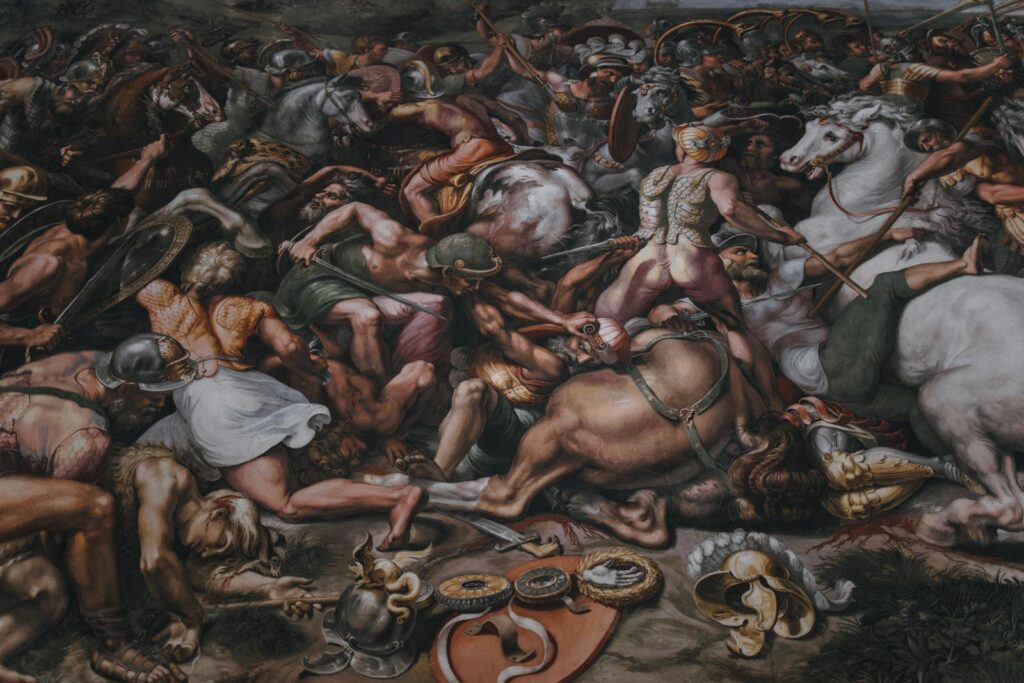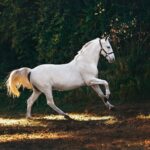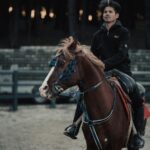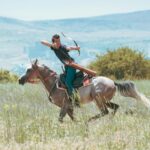From ancient battlefields to modern ceremonial units, war horses have played a vital role in military history. These remarkable animals carried warriors into combat, hauled heavy siege equipment, and often influenced the outcome of history’s most decisive conflicts. The choice of horse breeds for war was never arbitrary—traits like size, strength, courage, and steady temperament made certain breeds stand out amid the chaos of battle. This article explores some of the most legendary equine warriors, examining how their unique qualities shaped warfare and why these breeds earned their place in history.
Destriers: The Medieval Knight’s Ultimate Weapon
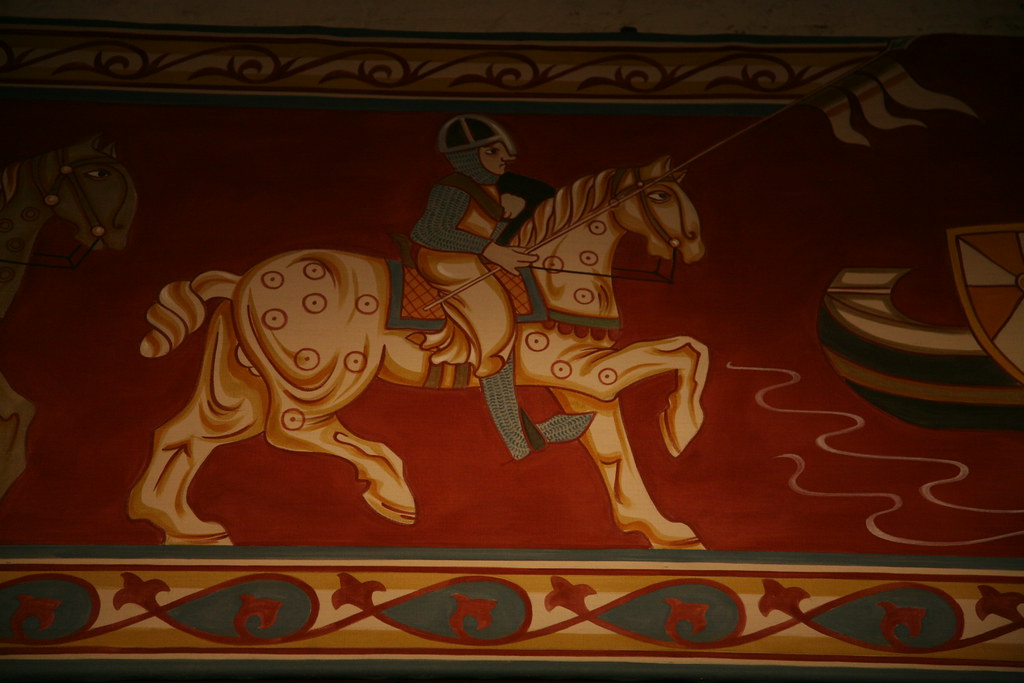
Often called the “Great Horse,” the Destrier wasn’t a specific breed but a type of war horse specially trained for the medieval battlefield. These horses were the most prestigious and costly mounts, almost exclusively owned by knights and nobility. Standing around 14-15 hands high (smaller than many modern warhorses), Destriers were bred for strength, agility, and courage rather than size alone. Their exceptional training included adapting to the weight of armored riders, charging into enemy lines, and maintaining composure amidst the chaos of battle. Although no pure Destrier bloodlines remain today, many historians believe they share ancestry with modern Andalusians, Percherons, and Friesians—resulting in a powerful mount capable of carrying heavily armored knights while retaining the agility needed for combat with lances and swords.
Andalusians: Spain’s Ancient War Horses
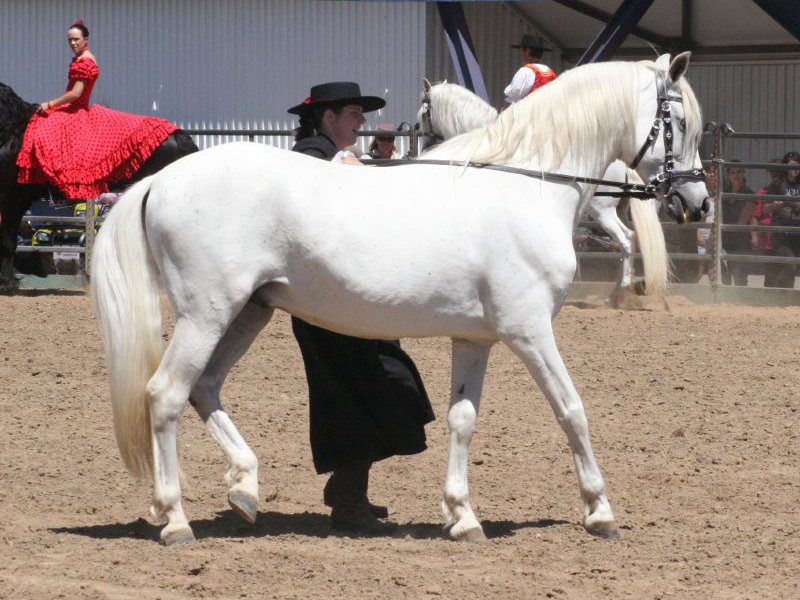
The Andalusian, also known as the Pure Spanish Horse or PRE (Pura Raza Española), served as one of history’s premier war horses for centuries. Originating in the Iberian Peninsula, these horses became famous throughout medieval Europe for their exceptional courage, athleticism, and trainability under pressure. With their compact muscular build, arched neck, and natural collection, Andalusians were ideal for the precise movements required in mounted combat. Spanish conquistadors later brought these horses to the Americas, where they profoundly impacted warfare and indigenous cultures. The breed’s natural talent for collection and lateral movements—essential for battlefield maneuverability—made them particularly valued for maneuvers that would eventually evolve into modern dressage. Their intelligence and responsiveness to subtle cues allowed riders to control them primarily with weight shifts and leg pressure, keeping hands free for weapons during battle.
Percherons: From Medieval Chargers to Artillery Horses

The powerful Percheron originated in France’s Le Perche region, first serving as war horses during the medieval period before evolving into artillery and draft animals. These massive horses—typically 16 to 17 hands high and weighing between 1,800 and 2,600 pounds—had the strength to carry heavily armored knights and the endurance to march for days across challenging terrain. During the Middle Ages, Arabian blood was introduced into the breed, adding refinement to their power and enhancing their versatility as military mounts. By the time of Napoleon’s campaigns, Percherons were invaluable for pulling artillery across Europe’s battlefields, their calm temperament helping them remain steady amid gunfire and chaos. Their reputation eventually spread worldwide, with American forces especially valuing them during both World Wars for their ability to haul heavy equipment through tough conditions while requiring minimal specialized care.
Friesian: The Black Warhorse of European Nobility
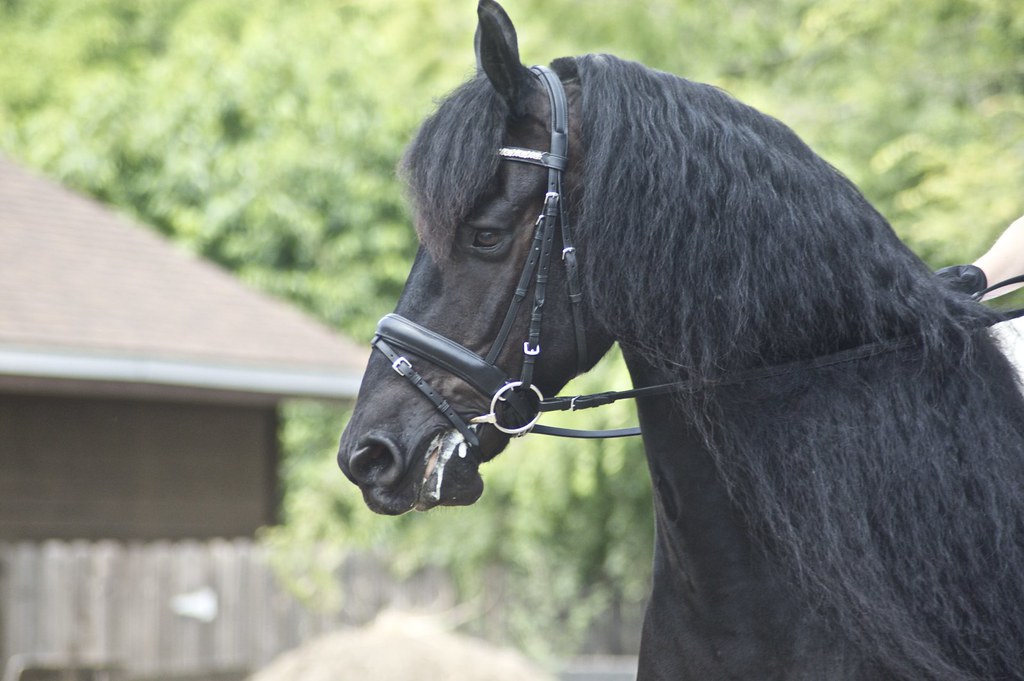
The striking black Friesian, known for its powerful build, flowing mane, and distinctive feathering, has a military history dating back to medieval times when Frisian knights rode them into battle. Originating in the Netherlands, Friesians combined strength with agility, making them equally capable of carrying armored knights while executing the precise maneuvers required in combat. During the Crusades, they gained widespread recognition across Europe as elite war horses, with their coal-black color becoming a symbol of power and prestige on the battlefield. By the 16th and 17th centuries, their role expanded to include pulling carriages and serving as regal mounts for European nobility, all while continuing to serve in military contexts. Although the breed nearly vanished during industrialization, dedicated breeders in the Netherlands preserved the Friesian’s muscular frame and trainable temperament—traits that once made them such formidable war horses.
Arabian: The Desert Warrior’s Advantage
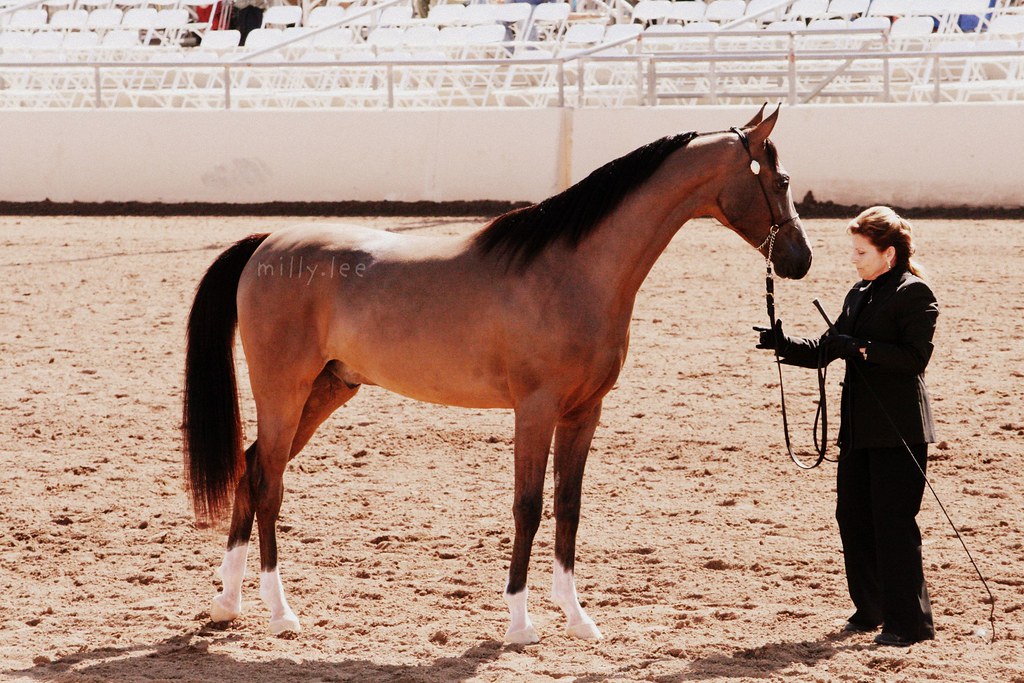
The Arabian horse revolutionized warfare in the ancient Middle East and later influenced European cavalry traditions with its unmatched endurance and intelligence. Bred by Bedouin tribes in the harsh desert, these horses could travel remarkable distances on minimal food and water—an essential advantage in long campaigns and swift raids. Their distinctive concave facial profile houses enlarged sinuses that support efficient breathing during sustained exertion, while their compact, refined build allows for exceptional agility at high speeds. Unlike the heavier European war horses, Arabians excelled in light cavalry roles, reconnaissance, and fast-moving raids rather than carrying heavily armored knights. Their loyalty and intelligence became the stuff of legend, with tales of Arabians carrying injured riders to safety or returning to camp on their own after battle. Perhaps most significantly, Arabian bloodlines were introduced into nearly every European war horse breed, bringing refinement, stamina, and intelligence that helped reshape cavalry tactics across the continent.
Mongolian Horse: Genghis Khan’s Secret Weapon
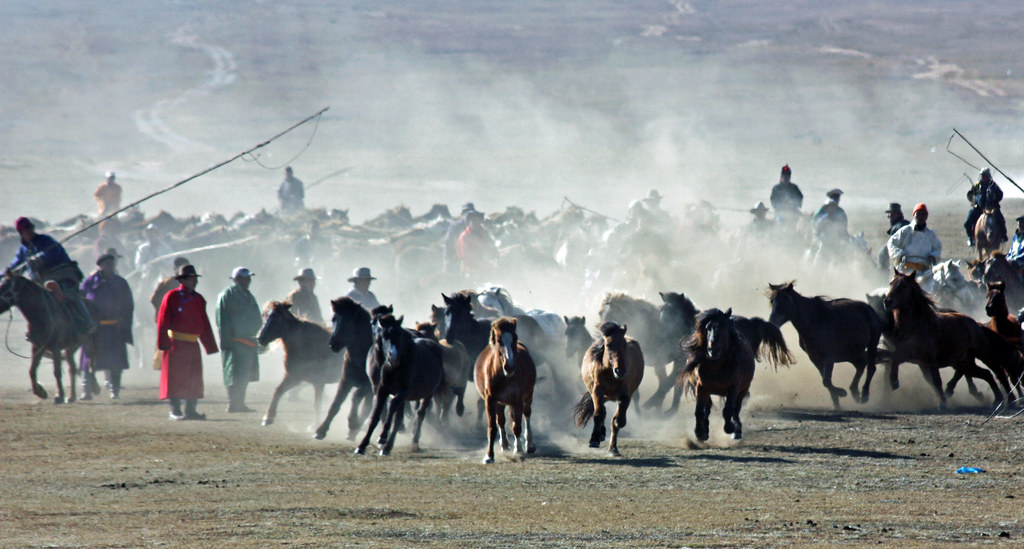
The unassuming Mongolian horse played a pivotal role in building history’s largest contiguous land empire under Genghis Khan and his successors. Though small by modern standards—typically just 12 to 14 hands high—these horses had extraordinary endurance, surviving on minimal forage while covering 60 to 100 miles a day during military campaigns. Mongolian warriors often kept multiple horses per rider, rotating mounts to stay fresh and maintain a pace that larger, less resilient breeds couldn’t match across vast distances. Their natural hardiness allowed them to withstand extreme temperatures, from -40°F winters to scorching summers, enabling year-round campaigns when other armies were forced into winter quarters. Unlike European war horses, Mongolian horses lived semi-wild, foraging on their own and requiring little care, which eliminated the need for the massive supply trains that slowed rival forces. Their speed and agility also allowed Mongol warriors to execute feigned retreats and rapid flanking maneuvers—tactics that became trademarks of their military dominance across Asia and Eastern Europe.
Marwari: India’s Battlefield Sentinel
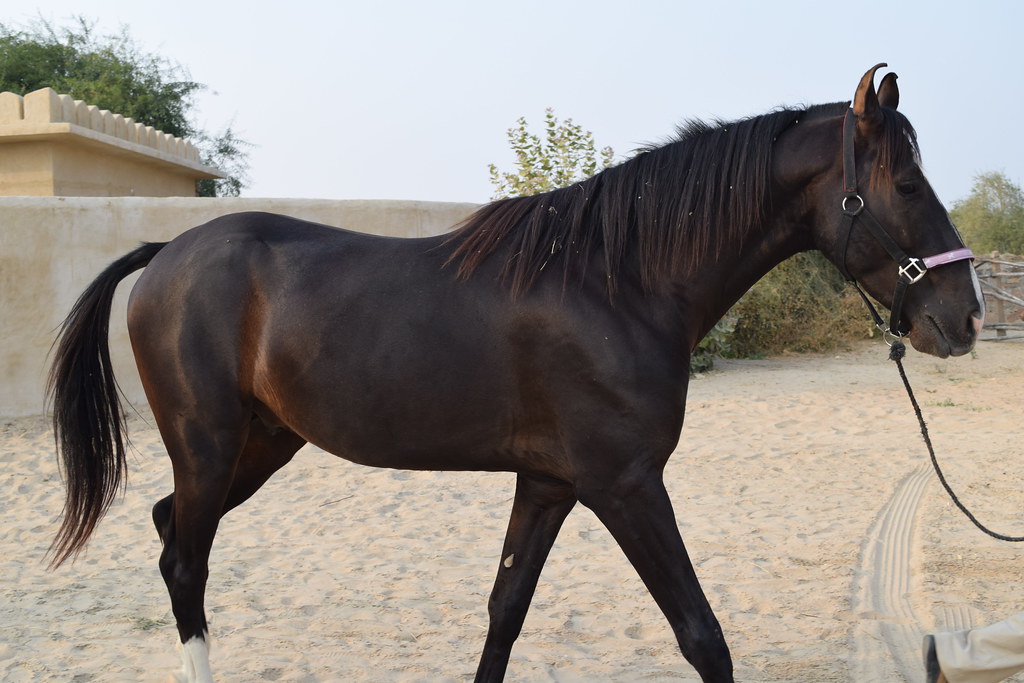
The Marwari horse developed in India’s Marwar region as the dedicated war mount of the Rajput warrior caste, known for its distinctive inward-curving ears that can rotate 180 degrees, providing superior directional hearing that proved invaluable in battle. These horses were selectively bred for intense loyalty, with historical accounts describing Marwaris refusing to abandon fallen riders and even defending their wounded masters on the battlefield. Their natural heat tolerance and ability to survive on minimal water made them well suited for warfare in India’s harsh climate, allowing Rajput forces to campaign during seasons when invading armies’ mounts faltered. The breed’s agility enabled complex cavalry maneuvers, while its intelligence allowed for advanced training techniques, such as responding to rider pressure instead of reins, freeing warriors’ hands for weapons. During the British colonial period, many Marwaris were systematically culled due to their ties with resistance forces, nearly driving the breed to extinction before 20th-century preservation efforts helped save these historic war horses.
Nisean: Ancient Persia’s Forgotten Warhorse
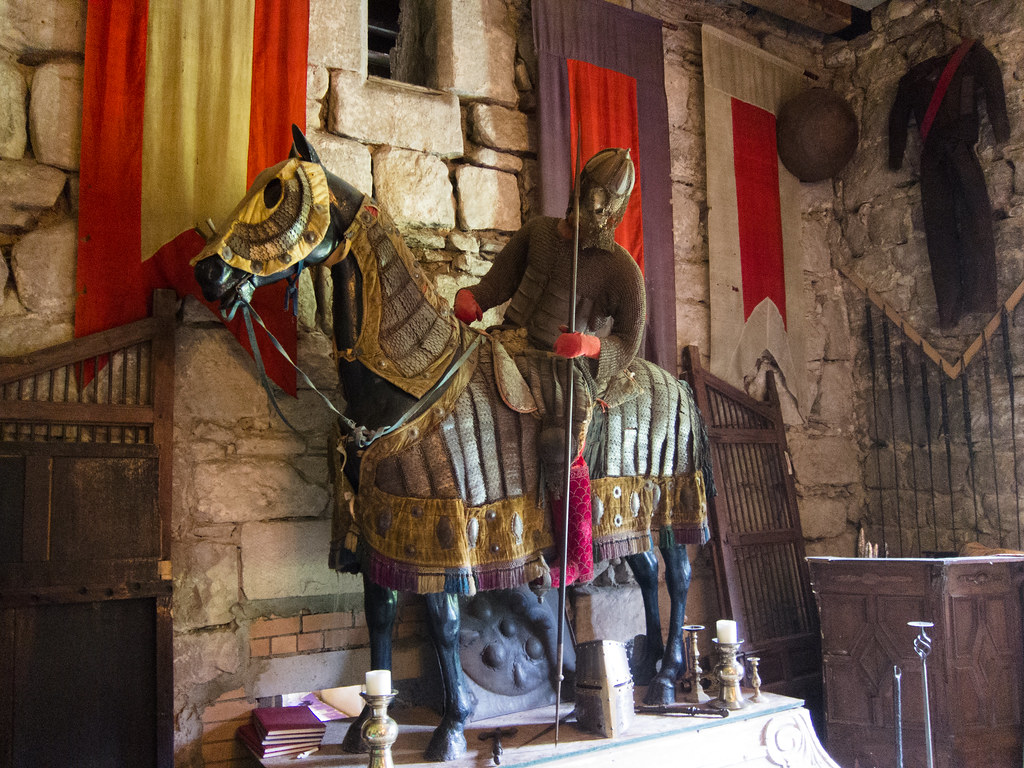
The now-extinct Nisean horse once stood as the premier war horse of the ancient world, serving as the backbone of Persian military power from around 700 BCE to 600 CE. Historical texts describe these horses as significantly larger than other breeds of the time, with some accounts claiming they stood up to 18 hands high, making them truly imposing figures on ancient battlefields. Their size and strength made them ideal for carrying heavily armored cataphracts, the elite heavy cavalry units that acted as shock troops in Persian armies. Nisean horses were so prized that they received royal protection, with breeding programs overseen by nobility and entire regions dedicated to their development. Alexander the Great reportedly admired them so much that he captured thousands during his conquest of the Persian Empire and incorporated them into his own cavalry. Although the pure Nisean bloodline vanished with the fall of the Sassanid Empire, their genetic legacy likely lives on in several modern Middle Eastern and Central Asian breeds.
Shire and Clydesdale: The Heavy Artillery Pullers
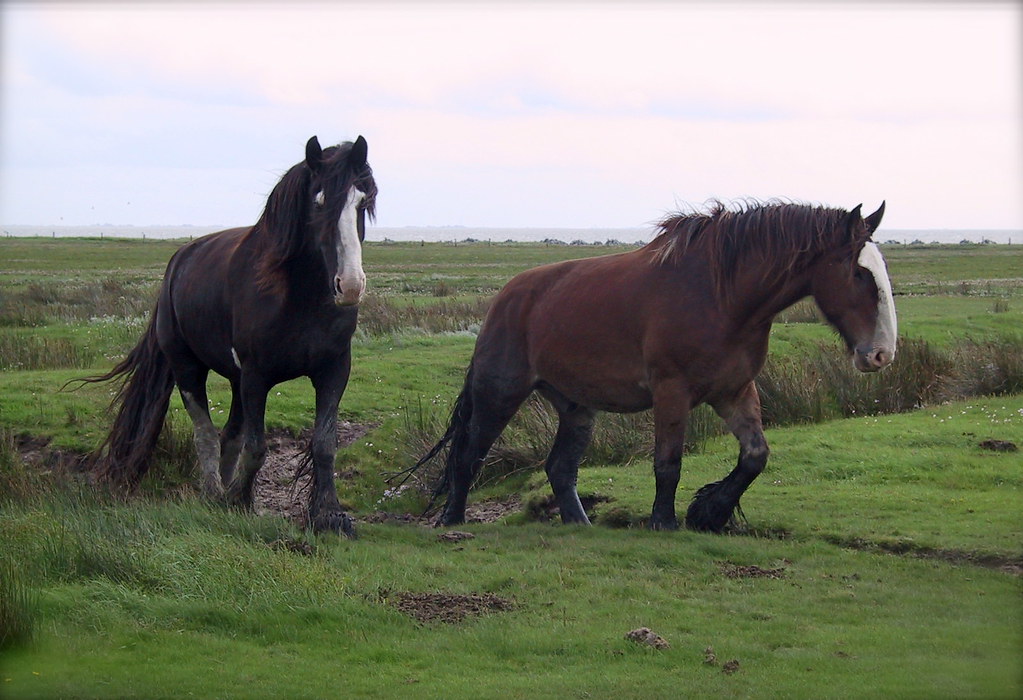
Though often associated with peaceful agricultural work, both Shire and Clydesdale horses played critical roles in military logistics, particularly during the era of heavy artillery. These massive draft breeds, with Shires historically recognized as the world’s largest horses, had the raw strength needed to haul artillery pieces weighing several tons through mud, snow, and rough terrain where early motorized vehicles often failed. During World War I, thousands were requisitioned for military service, their calm temperaments proving invaluable amid the chaos and noise of industrial warfare. Their broad, feathered hooves offered natural stability in the mud-choked conditions of the Western Front, where lighter horses frequently became hopelessly mired. In addition to moving artillery, these giants transported vital supplies, evacuated wounded soldiers, and maintained communication lines when mechanical systems broke down. The British Army alone deployed over a million horses in World War I, with Shires and Clydesdales taking on the heaviest loads, proving that even in the age of mechanization, these powerful breeds remained indispensable military assets.
Thoroughbred: Speed and Stamina in Modern Warfare
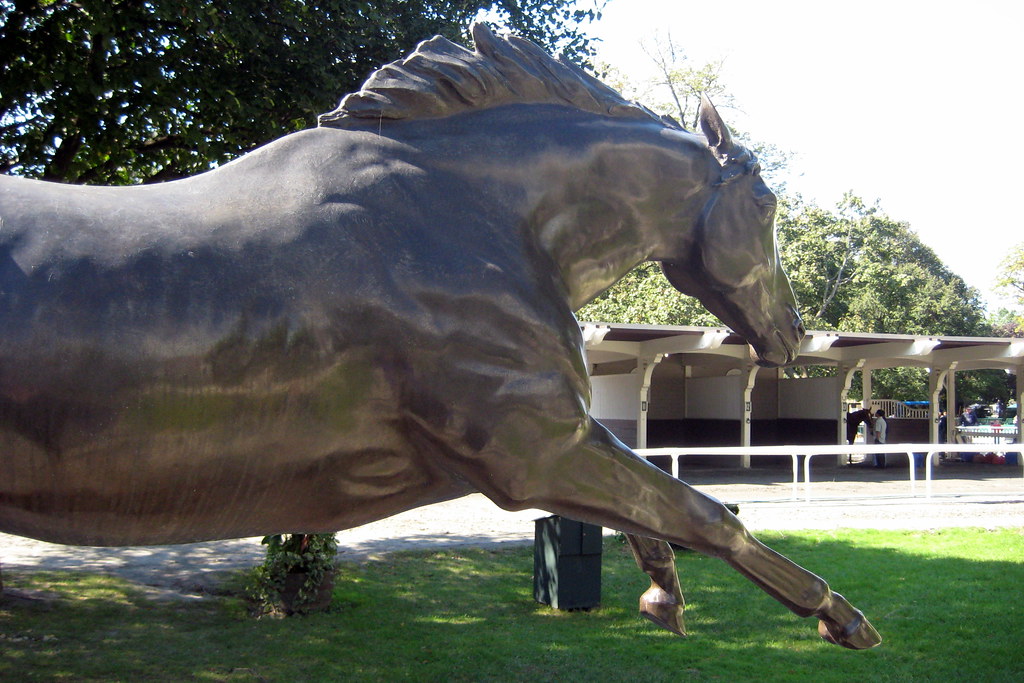
While not developed specifically for war, the Thoroughbred revolutionized cavalry tactics from the 18th century onward by introducing unprecedented speed and athleticism to the battlefield. Originally bred in England by crossing Arabian, Barb, and Turkoman horses with native English mares, Thoroughbreds brought a level of swiftness that transformed reconnaissance, pursuit, and shock tactics across European armies. During the American Civil War, Thoroughbred-influenced cavalry could cover 40 to 60 miles per day on extended campaigns, with bursts of speed reaching up to 35 mph—enabling rapid redeployment that reshaped conventional military strategy. Their exceptional cardiovascular capacity allowed them to sustain movement at speeds other breeds couldn’t match, although this came with higher nutritional demands and somewhat reduced hardiness. By World War I, Thoroughbreds and their crosses had become the preferred mounts for officers and elite cavalry units, valued for their responsiveness and courage under fire. Even after mechanization removed horses from front-line combat, Thoroughbred crosses remained favorites in ceremonial military units for their striking appearance and athletic presence.
Akhal-Teke: Turkmenistan’s Golden Warriors
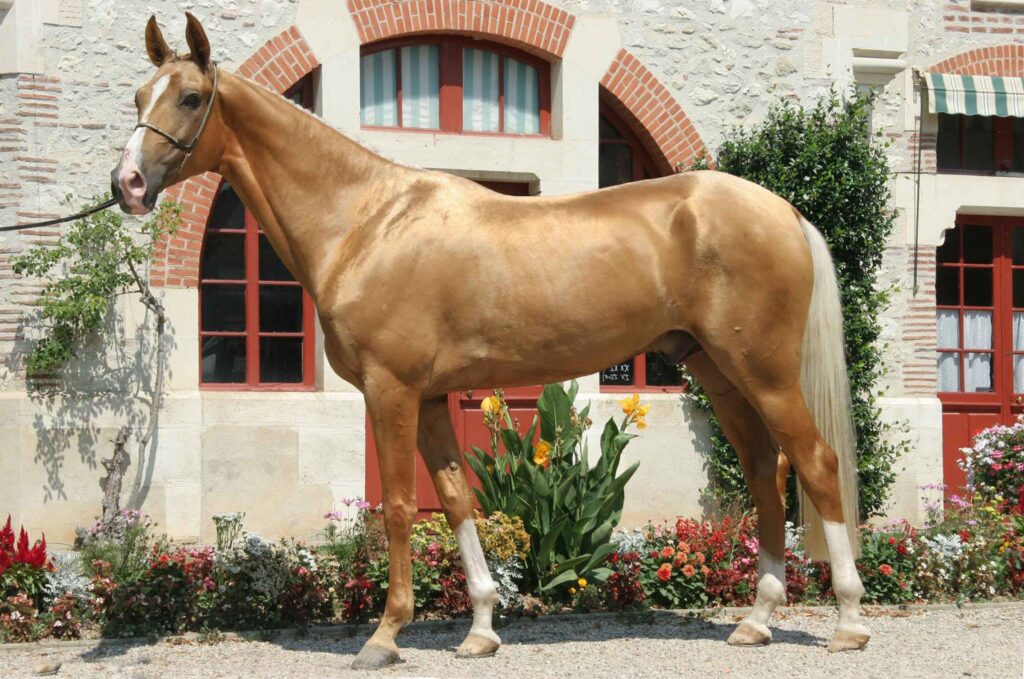
The Akhal-Teke, sometimes called the world’s first war horse, developed in what is now Turkmenistan as a raid and reconnaissance mount capable of traveling vast distances with minimal water or food. These distinctive horses—famous for their metallic coat that can appear almost golden—evolved in one of Central Asia’s harshest desert regions, developing the athleticism and endurance that made them invaluable in warfare. Historical accounts describe Akhal-Tekes covering up to 300 miles of desert terrain in just three days, carrying fully equipped warriors the entire way. Their unusual physiology—including minimal body fat, an extremely efficient metabolism, and dense bone structure—produced a horse capable of sustained high performance in conditions that would overwhelm other breeds. Russian General Kuropatkin brought wider attention to the breed after his Akhal-Teke stallion, Absent, traveled from Ashkhabad to St. Petersburg in 1880, covering 2,800 miles in just 84 days—including a three-day stretch across 235 miles of waterless desert. In modern times, this ancient war horse continues to prove its endurance in competition, with Akhal-Tekes often excelling in the world’s most grueling endurance events—demonstrating the same traits that once made them feared and respected on ancient battlefields.
Ardennes: The Ancient Warhorse That Survived Napoleon’s Russian Campaign
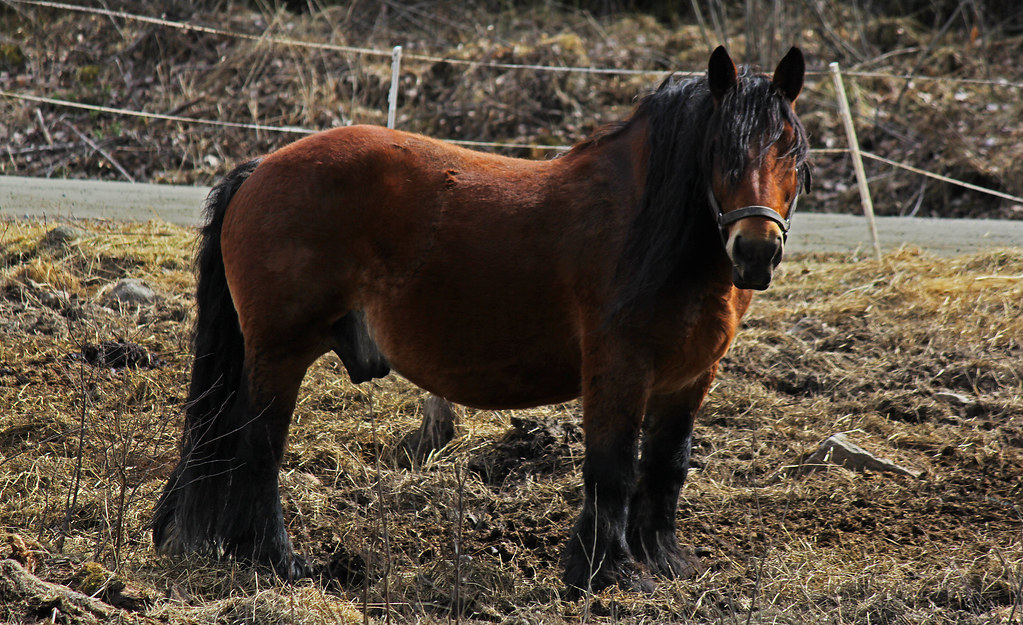
The Ardennes horse boasts one of the longest documented histories of any war horse breed, with references dating back to ancient Rome, where Julius Caesar praised them in his Commentaries on the Gallic War. These powerful, compact horses from the Ardennes Forest region—spanning Belgium, Luxembourg, and France—proved remarkably adaptable to warfare across vastly different eras, from pulling Roman chariots to hauling artillery in both World Wars. Their most legendary military service came during Napoleon’s disastrous 1812 Russian campaign, where Ardennes horses showed extraordinary survival rates compared to other breeds. Historical accounts suggest they were among the few to endure both the advance to Moscow and the brutal winter retreat. This resilience stems from their development in the rugged, rocky terrain of the Ardennes, which produced thick-boned legs, exceptional durability, and a metabolism efficient enough to survive on minimal forage. Unlike taller draft breeds, the Ardennes’ lower center of gravity provided superior stability on difficult terrain, while their dense winter coat and remarkable cold tolerance allowed them to endure the deadly conditions that killed hundreds of thousands of other horses during Napoleon’s campaign. Their continued use in both World Wars highlights the enduring value of their unique combination of strength, resilience, and calm temperament under extreme combat conditions.
The American Quarter Horse: The Cavalry Mount of the American Frontier
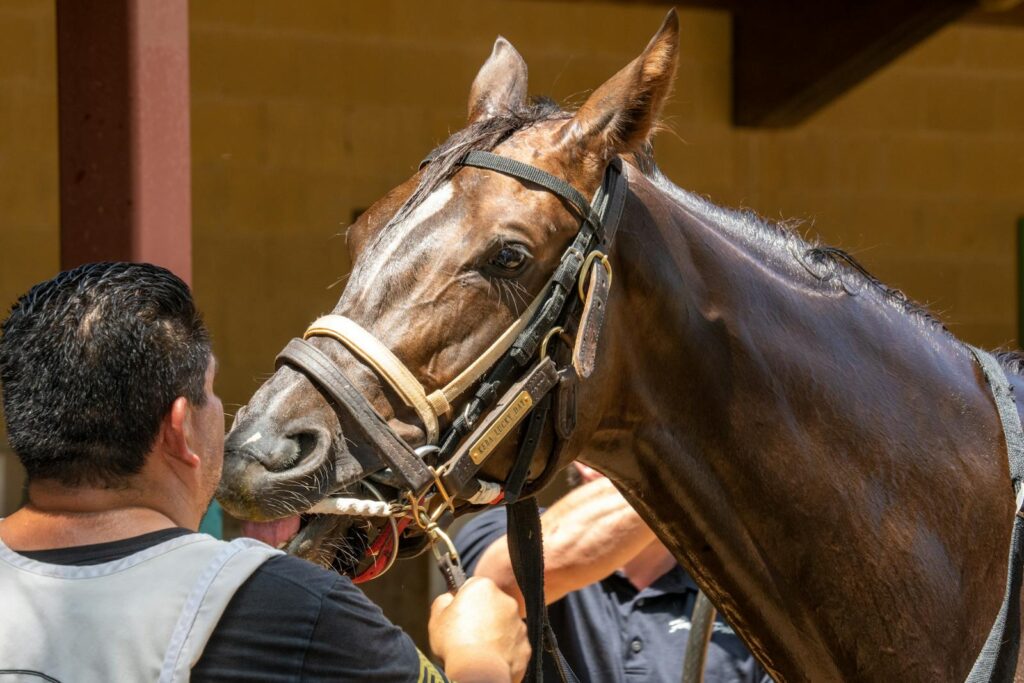
Though developed after the height of horse-based warfare, the American Quarter Horse became the definitive military mount of the American frontier, serving extensively with the U.S. Cavalry during westward expansion and the Indian Wars. These horses combined several traits ideally suited for frontier combat—explosive acceleration for short-distance charges, remarkable agility across rough terrain, and a natural “cow sense” that made them highly responsive in unpredictable combat situations. Unlike European war horses bred for formal battlefield tactics, Quarter Horses evolved from a blend of Colonial Spanish horses, Thoroughbreds, and native stock, selectively bred for the practical demands of both warfare and ranch work. Their compact musculature and powerful hindquarters enabled the quick starts, stops, and turns essential for the skirmish tactics that defined American frontier combat, where formal battle lines were rare. The breed’s hardiness and ability to thrive on sparse grazing made them logistically superior for long-range patrols in regions with limited infrastructure or supply support. By the time of the Spanish-American War and into the early 20th century, the Quarter Horse had become so closely associated with U.S. military operations that specialized breeding programs were established to supply cavalry remounts—creating a legacy that continues today in ceremonial units and historical reenactments honoring this uniquely American war horse.
The history of warfare has been shaped significantly by the powerful horse breeds that carried warriors into battle across millennia. From the massive Destriers that dominated medieval battlefields to the lightning-fast Arabians that revolutionized light cavalry tactics, each breed brought unique advantages suited to specific combat environments and military strategies. The selection of war horses wasn’t simply about size or strength—it was about finding the right combination of physical capability, temperament, and trainability for particular battlefield roles. While modern warfare has long since moved beyond cavalry charges, the legacy of these remarkable animals lives on through military ceremonies, historical reenactments, and the genetic influence they’ve passed on to contemporary horse breeds. Their impact extends far beyond the battlefield—these war horses helped shape the course of human civilization, enabling conquests, connecting cultures, and deciding the fate of empires in ways that still echo through history.

